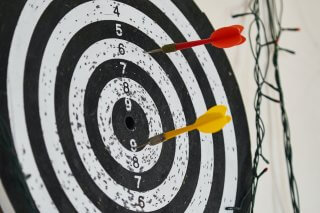Being a BA means working in various teams, on multiple projects at the same time, with a lot of thoughts and ideas popping into your mind all over the day. Dealing with so much information is not easy; transforming this information into actionable and usable data is even more complicated. Lately, many bloggers are praising the power of Lists to handle this professional reality:
- An Elephant Really Does Have a Great Memory (link unavailable anymore) by Karie Price (Real World BA)
- Why “List” is a Dirty Word by David Allen
- What Else Did I Need To Do??? by Betsy Stockdale
However, I’ve seen many BAs trying to use lists to help them, but also seen many of them failing to use lists effectively. So, how can we use lists effectively as a BA?
For a long time, I had difficulties using my lists effectively. I had a lot of lists to manage various aspects of my work, but it was hard for me to extract useful data from those lists. Moreover, I had so many lists that even though I had created those lists to help me, I was spending too much time trying to find the right list to get the information I needed. In the end, many of those lists ended up in my trash can because they were not useful at all.
Then, I came across a small book by David Allen, Getting Things Done (GTD). In his book, David suggests a simple 5-step process to deal with the information we constantly receive (i.e. the stuff) and how to handle this stuff with simple lists. There is no magic behind GTD, but by following his tips, I’ve been able to dramatically improve the way I use my own lists, and improve the quality of my work as a BA.
Find out which 7 lists are helping me on a daily basis by reading the post I previously published on Bridging the Gap!
Do you like what you’re reading?
The BA Lists Checklist
Inbox lists
The first lists I use are my “inbox” lists. This is where I store everything that I capture through the day. I usually keep one of these lists with me on my smartphone (a Nexus One) so that I can store everything that comes through my mind. I also have a paper-based inbox list, to capture stuff that pops during meetings, workshops and coffee machine discussions. Finally, my email inbox also acts as an inbox list, since a lot of my interactions with stakeholders occurs through email. These inbox lists allows me to capture everything I want to, no matter what I’m doing.
Usually, at the end of the day, I go through all my inbox lists to process the gathered information, and updates my real lists, i.e. the ones I use when I’m looking for the next things to do. This is where some specific BA lists are useful.
Stakeholders lists
I create a list for each major stakeholder involved in my ongoing projects, on which I keep stuff that relates to this person. This is particularly useful to get the most of the interactions I get with people. For example, when I get on the phone with Mr. X to discuss a specific subject, I always check his list so that I can follow-up on pending issues I might have or items I might be waiting for him. I got many positive comments from stakeholders about how they feel that our interactions are more productive since I started using these lists.
Deliverables lists
I also create a list for each project deliverable I have to complete, on which I keep various notes about work that has to be done on this deliverable. This is especially useful when I don’t have much time to work on these documents. I can rely on those lists to keep all relevant information in one place, so when I take some time to work on one deliverable, I know I can find everything that needs to be done on that list, without losing time searching for information or wondering if I have forgotten something to do.
Calendar list
There is no magic in this list, as probably everyone is using a calendar. However, I try to stick to the GTD concepts for this “list”, and I only put items that are time-based. For example, I track my workshops and other meetings in my calendar, but also deadlines for specific deliverables. All other non time-based actions go into my other lists, so I know that by looking at my calendar, I will only see time-related stuff.
Someday list
I use my “someday” list to keep track of stuff that does not relate to my current projects, but might have some interest in the future (for example, long-term process or system improvement ideas). This helps me focus on my current projects, and free my mind from these ideas without losing them over time.
Reference lists
For all the stuff that is not actionable but still useful, I have a “reference” folder on my laptop to store everything. I don’t use anything fancy, nor a complex structure to manage everything. I have basically theses folders:
- one for project-related material;
- one for process-related material; and
- one for the remaining documents.
With modern tools to search documents (i.e. Google Desktop), I found it more complicated to maintain a structure to find the stuff I want than to actually use the search functionality on my laptop.
Routine checklists
For frequent activities, I have specific checklists to remind me steps to follow. I could do a listing here, but this article on “Checklists for Business Analysts” makes a good summary of my own checklists.
Working Effectively With Lists
These lists are great, but cannot do the work for you. For this reason, it is important to keep only actionable items in them, i.e. items that you can take at any time and start working to complete them. Filling your lists is therefore more than a copy & paste exercise; you have to think about what you will need to do when you will take this item the next time.
A final thing to remember about working with lists is how technology can help you (or not). There are hundreds of tools out there that will want to help you organize your lists. I tried many of them, but found out that none of them will really help you unless you know how to work with your lists. My current GTD system is made of paper, Lotus Notes tasks list, a smartphone and a folder on a shared drive. Even David Allen’s book does not mention or recommend specific software tools! Once you know how to work with your lists, you will know which software (or traditional) tools will work best for you.





